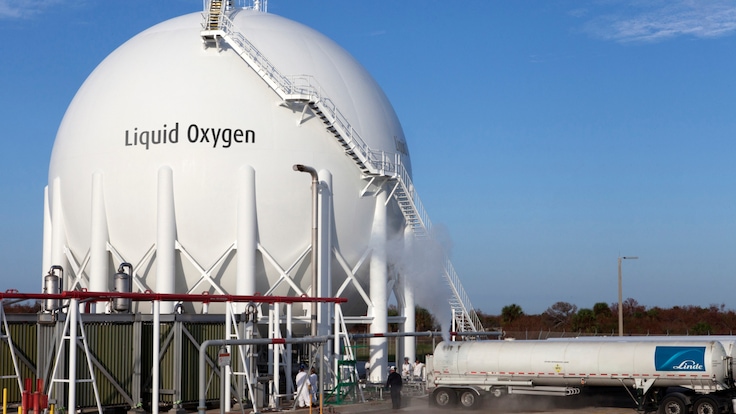Stage Three
Launch Fuels & Engine Testing


Taking Off with Industrial Gases
To propel a spacecraft and its payload out of our atmosphere takes an enormous amount of thrust. This controlled explosion is achieved by burning gases which are both light and extremely flammable. Liquid hydrogen and liquid oxygen are the signature fuels in a modern space program. Hydrogen is a light and extremely powerful fuel. It has the lowest molecular weight of any known substance and burns with extreme intensity. To create the necessary thrust at launch, Hydrogen is combined with Oxygen to produce, upon combustion, the necessary power to lift the spacecraft from the launch pad beyond earth's gravitation pull into space.

Delivering and Storing the Fuel
Because liquid oxygen and liquid hydrogen are both cryogenic, they are stored at temperatures lower than negative 400º F and handled with extreme care. To keep it from evaporating or boiling off, launch engines fueled with liquid hydrogen and liquid oxygen must be well insulated from all sources of heat including engine exhaust and air friction during flight through the atmosphere.

The Crucial Functions of Industrial Gases
Linde gases play critical roles in engine testing and launch. Launch engines use liquefied gases as propellants – as both oxidizers (oxygen, nitrous oxide) and fuel (hydrogen, methane). Liquid nitrogen is used for cooling and purging. Helium is needed to maintain tank pressures. Engine testing prior to each launch consumes several times as much propellant as the launch itself, and several waves of Linde deliveries are required over a few days for each large rocket launch. In the process, gas supply and reliability are key. Linde works closely with customers to plan supply, manage risks, and coordinate resources, to meet the critical launch window.